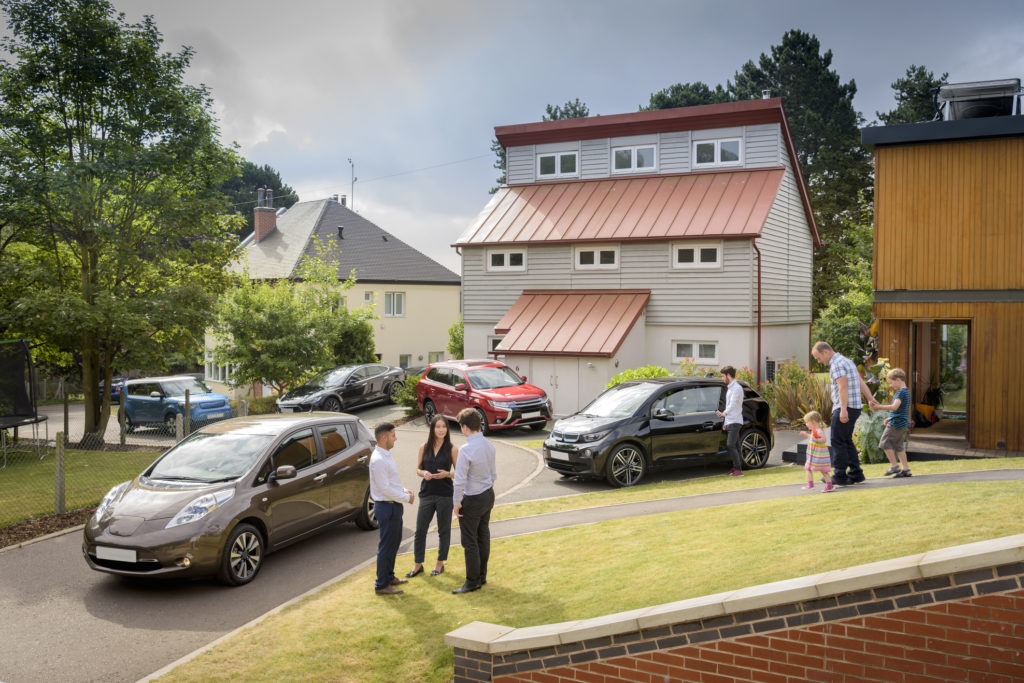German electricity grid will need upgrade for EV load as Audi forms pilot project
29 January 2018

29 January 2018
While vehicle manufacturers in Germany are preparing to shift their efforts into electric vehicles, there is a concern in the country that the power grid may not be ready for a large uptake.
Carmakers are increasingly moving to electric and plug-in hybrid vehicles as they look to meet emission targets set out by the EU for 2021 and beyond. With the collapse of the diesel vehicle market and higher CO2 emissions from their petrol counterparts, Electric mobility seems like the answer.
Speaking to German publication Automobilwoche, manager at electricity provider Innogy, Hildegard MÜller, says: ′We are facing a mammoth task. The expansion of electromobility is manageable, but we must take action to ensure that now.’
The situation is similar to concerns in the UK, where the Nation Grid believes home charging is not the future for electric vehicles.
In the Handelsblatt newspaper, a report highlights a study from management consultancy firm Oliver Wyman, together with TU Munich, which shows how much action must be taken. ′If the electric vehicle (EV) ration rises above 30%, measures must be taken to avoid power blackouts. In the coming five to ten years, supply bottlenecks will occasionally arise, for example in suburban areas with a higher affinity for electromobility.’
Another issue is the age of the country’s grid, with some supply cables up to 80-years-old. If a lot of people in one area decide to charge their vehicles at the same time, which could be a possibility, it leads to a scenario where the electricity supply in the area may collapse completely. Therefore, experts are calling on the German government to start upgrading the country’s electricity network now, especially as it may take some time to complete such a wide scale project.
However, the study also suggests that if 30% of EV owners charged their cars at different times to expected peak demand, the load on the network could be reduced. Therefore, should some form of flexible charging scheme be introduced, the need to upgrade may not be required, or at least can be carried out with less haste.
Such a project is being explored by Audi. The company’s Smart Energy Network interacts with the power gird from a connected home device. This involves combining various sizes of photovoltaic systems with stationary storage batteries. The control software by the Zurich start-up company Ampard distributes the solar power intelligently based on the current or plannable demand from car, household and heating system. A unique feature of the pilot project is that it also interacts with the power grid: Over a built-in communication interface, all systems are interconnected to form a virtual power plant and constitute a smart grid.
In a statement, Audi says the connected home storage devices can balance out the fluctuations between power generation and consumption, and stabilise the grid frequency by temporarily storing smaller amounts of energy in stationary units at short notice. This optimizes internal consumption: Operators of photovoltaic systems increase their proportion of own-use solar power while cutting their power procurement costs.
′We are looking at electric mobility in the context of an overall energy supply system that is increasingly based on renewables. We are playing a pioneering role with the prequalification of the balancing-power market – enabling producers to feed power into the grid, as part of the pilot project. That is now for the first time also possible down at the level of individual households, which helps balance the entire power grid,’ remarked Hagen Seifert, head of sustainable product concepts at Audi.